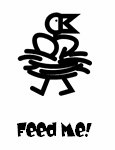
Before the open tomorrow, I will post an analysis of market expectations based on events among the secondary stocks. That should prove informative, as we have interesting five-day patterns.
Here, though, I want to follow up on my post earlier today. The market provided a great example of how trade ideas developed through historical analysis are just that: trade ideas. They need to be confirmed by real time market action to become viable trades.
One of the ways I'll look at a market intraday is to scan for expectable events and setups for those events. An example would be a move back to the average trading price for the current or previous day. I know, based on research, that the market will return to its average price 3/4 of the time--and more often if volume/volatility are low. Knowing this, I will then look for a setup--a real-time event--to confirm for me that this historical tendency is likely to occur. Thus, for instance, I'll see that the ES has moved to the upper end of its range, but other indices haven't. Then I'll see volume lifting offers drying up. That will trigger my trade for a move back to the day's average price.
Today I was looking for a different expectable event: A boost in the NYSE TICK to 1000 or greater. Before acting on that, I needed a setup: Some real-time event to confirm for me that buyers were gaining the upper hand. Not only didn't we get the setup, we got the reverse: Bond yields after 10:30 AM CT rose and the market sold off, taking the TICK lower. At that point, our Cumulative Adjusted TICK began making daily lows and it was clear that traders were hitting bids, not taking offers. With interest rates again weighing on stocks and short-term sentiment negative--as shown by the negative TICK--the trade idea gained no validation.
All of this raises an important point: Coming up with good trade ideas is simple. The difficult part is knowing whether and when to act upon them. In my own trading, I need an idea, a setup, and then a framework for managing the trade once it's on. There is much more to trading competence than coming up with good ideas--and today provided a nice demonstration of that.




